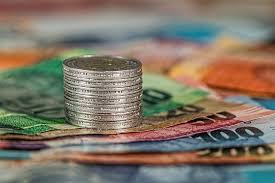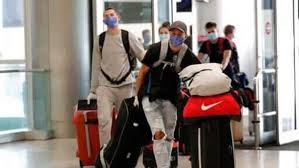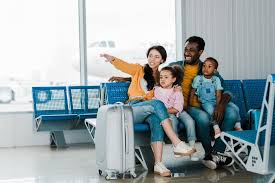ASSIGNMENT 1: CASE STUDY
In the following passage you will read a case study on Yunnan Lucky Air. A China-based low fare airline that is trying to overcome growth issues by considering to pursue a new strategy. That is to invest in e-commerce for customer ticket purchases. Read the passage carefully and answer the questions.
DH210s Hospitality And Tourism Economics Assignment-UCIC University New Zealand.

LUCKY AIR
Lucky Air was founded in 2004 with an initial capitalization of US$2.2 million (RMB15 million). As one of China’s most popular domestic tourist destinations, Yunnan province was seeing significant growth in the number of tourists. Between 2007 and 2008, the number of projected arrivals was predicted to increase from 21 million to over 24 million. Lucky Air based its routes on the tourist destinations within Yunnan province, such as Dali and X is huanbanna. The limited route license granted by the government gave Lucky Air a near monopoly status within Yunnan and these routes contributed to most of its profits. As it grew,however, Lucky Air gradually added flights to and from destinations outside the province. By early 2008, these extra-provincial routes represented 87 of its 150 weekly flights.
Lucky Air had five Boeing 737-700 air planes, each with a capacity of 148 seats. In 2006, it carried roughly 500,000 passengers for 5,746 total flight hours with a load factor of 74.7%. In 2007, it carried roughly 1.2 million passengers for 17,875 total flight hours with a load factor of 81.4%. Over the same period Lucky Air more than tripled its operating revenue, from US$31.2 million to US$104.3 million, and achieved profitability just three years after it was founded.
Lucky Air had positioned itself as a low-cost, high-efficiency airline and adopted most of the key components of the Southwest Airlines model. By using a single type of aircraft it reduced maintenance and operational complexity. It offered only one seat class – coach – and simple one-way pricing. There were no seat assignments or in-flight entertainment. Most of its routes were short haul and point-to-point to increase on-time departure and arrival. It
operated mostly in secondary cities to avoid congestion and reduce landing costs. However, unlike low-cost airlines in the United States and Europe that could achieve a roughly 30% cost advantage, Lucky Air’s cost structure was only about 5% lower than the industry average, mostly due to government-imposed constraints.
DH210s Hospitality And Tourism Economics Assignment-UCIC University New Zealand.

Lucky Air’s four largest cost components – fuel, landing fees, aircraft leasing, and taxes – comprised about 70% of its operating cost, yet these costs were heavily influenced by government regulations.
Fuel – China Aviation Oil was the sole fuel supplier for Chinese Airlines and the fuel price was set by the National Development and Reform Commission (NDRC). A small airline like Lucky Air had to pay for its fuel in advance until it proved itself as an established airline, adding to the firm’s financial burdens. Fuel price also differed from region to region and Yunnan happened to have a higher price than the national average. Furthermore, carriers in China were not allowed to hedge oil price risk through financial instruments. Route optimization, another way to reduce the fuel expense, was also prohibited in China due to safety concerns.
Landing Fees– In the United States, many secondary airports offered a lower landing fee and were attractive to low-cost carriers. In China, the relative late development of the aviation industry meant that most cities had only one airport. The landing fees for major airports were set by the government and had been rising in recent years. Even for the few cities with more than one airport, airlines were required to pay the same landing fee regardless of the location
and capacity. Airports in very small cities (less than 1 million inhabitants) did offer much lower landing fees, but there were usually not enough passengers in these cities to make the routes viable.
Aircraft Leasing– All aircraft leasing was controlled by the aviation bureau of the NDRC. Due to safety concerns, the NDRC mandated that airline capacity expansion could not exceed 35% per year. As an airline grew, the expansion cap could fall even lower. Airlines were not allowed to lease aircraft directly from a manufacturer or a third party, who might offer better financial terms. In addition, small airlines were usually lower on the priority list to receive
air planes and sometimes had to wait more than five years. This long lead time often hindered an airline’s ability to respond quickly to market dynamics.
Taxes – Various government taxes laid an additional burden on an airline’s operation – in Lucky Air’s case, anywhere from 2% to 10%. On top of these restrictions, Lucky Air was also subject to strict pricing regulations as well as fees imposed by travel agents and China’s ticket distribution system. These limited its ability to increase revenue and achieve Southwest-level margins.
DH210s Hospitality And Tourism Economics Assignment-UCIC University New Zealand.

New Way for Lucky Air
Lucky Air and its parent, Hainan Airlines, were growing concerned. The Chinese airline industry was heavily regulated, limiting flexibility for new airlines. Nonetheless, new low- cost competitors were blossoming, and Lucky Air found itself among an increasingly crowded field there were 11 low-cost Chinese airlines by 2007, and two more waiting for
official approval. Anticipating a potential squeeze, Lucky Air was searching for additional competitive advantages.
One option was to focus on e-commerce. Lucky Air’s IT operation was backed by Hainan Airlines, which had one of the most advanced web portals in the Chinese airline industry. True, airline e-commerce was still at an early stage in China, but Lucky Air was eager to position itself at the cutting edge of technology and reap the same rewards as Southwest
Airlines and similar U.S. competitors. Yet Lucky Air’s executives had to decide what was right for their company, customers, and market. If they chose the wrong expansion strategy or missed the mark with e-commerce, then the company’s luck might run out forever.
In China a passenger could buy an airline ticket directly from an airline, an authorized agent, or an online distributor. When passengers bought tickets directly from an airline, the transaction was handled by the airline’s call center, ticket counter, or website. Many large airlines invested a large amount of capital to set up call centers to handle booking so that they could avoid paying travel agent commissions
Although China’s technology infrastructure had improved rapidly in recent years, the e-commerce sector remained relatively unsophisticated. Transaction security was often poor and payment systems expensive or unavailable, so only 15.8% of Internet users were online buyers and only 25% used an online banking service. Credit card companies collected fees averaging 5% to 10% per transaction, further dissuading Internet shopping.
The online travel market in China was relatively small, less than 1% of the total travel market in 2007. The two largest players were C trip and e Long, together dominating 75% of the market share. These online travel agencies were becoming increasingly important providers of travel services, appealing especially to young professionals. In recent years, online travel websites had seized considerable market share from the traditional offline travel agents and
charged the same commission fees to the airlines as their offline competitors.
Lucky Air sold about 80% of its tickets through agents, paying them a 2% commission, and the rest through its own website. Among tickets sold on its website, 95% were bought by reseller agents who turned around and resold the tickets to individual consumers. Only 1% of the total tickets were purchased directly by consumers on lucky air.net.
China planned to invest US$20.2 billion in upgrading the capacity of existing airports and opening 50 new ones, bringing the total to 190 by the year 2010. These changes could give low-cost airlines excellent opportunities in the next few years. Yet the high growth potential and easing regulatory climate would also attract new entrants and increase competition.
Required:
Based on the passage, answer the following questions:
a.Examine the business model and business strategy for the Lucky Air.
b.Discuss the concept of elasticity of demand and market structure for the Lucky Air.
c.Identify the factors influence on its profit.
d.Discuss the challenges and issues faced by the organization and the implications toward the organization’s control system.
e.Examine various cost structures of the Lucky Air.
f.Analyse the multiplier effect of the Lucky Air.
ASSIGNMENT 2: REAL CASE REFLECTION
You are required to find the case studies or news on the impact of COVID-19 pandemic towards the economy in cruise line:
Based on the case studies or news that you have found, you are required to review and discuss in +-800 words. You must include the followings in your reflection:
DH210s Hospitality And Tourism Economics Assignment-UCIC University New Zealand.

- the travel’s services economics (how the industry creates its value, type of market structure and its characteristics); and
- supply and demand analysis to analyse the impact of economic events on markets (graphs are required to support your writing).
Instruction: All the case studies/news must be submitted along with your reflection as Appendices (print screen is allowed).
Grading information:
Economic Analysis (25%)
Conclusion and Recommendation (5%)



